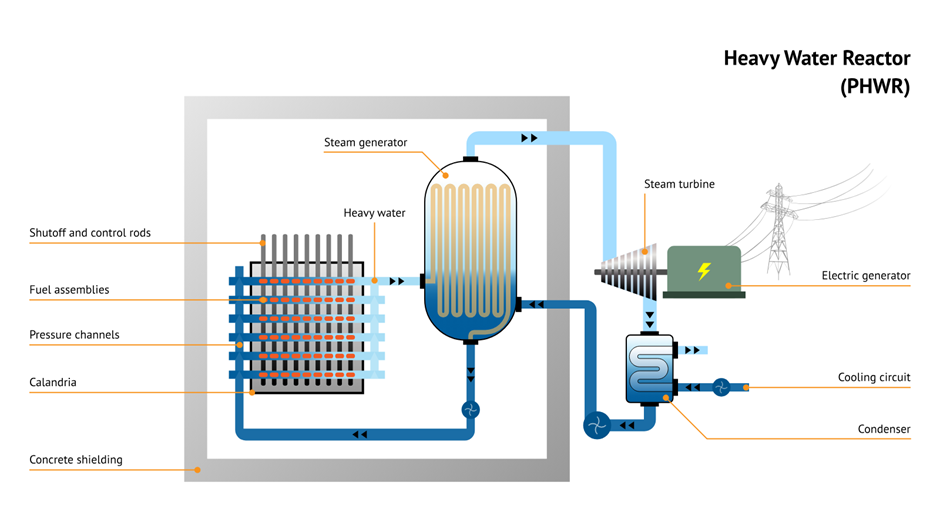- Courses
- GS Full Course 1 Year
- GS Full Course 2 Year
- GS Full Course 3 Year
- GS Full Course Till Selection
- Answer Alpha: Mains 2025 Mentorship
- MEP (Mains Enrichment Programme) Data, Facts
- Essay Target – 150+ Marks
- Online Program
- GS Recorded Course
- Polity
- Geography
- Economy
- Ancient, Medieval and Art & Culture AMAC
- Modern India, Post Independence & World History
- Environment
- Governance
- Science & Technology
- International Relations and Internal Security
- Disaster Management
- Ethics
- NCERT Current Affairs
- Indian Society and Social Issue
- NCERT- Science and Technology
- NCERT - Geography
- NCERT - Ancient History
- NCERT- World History
- NCERT Modern History
- CSAT
- 5 LAYERED ARJUNA Mentorship
- Public Administration Optional
- ABOUT US
- OUR TOPPERS
- TEST SERIES
- FREE STUDY MATERIAL
- VIDEOS
- CONTACT US
pressurized heavy water reactor (phwr)
pressurized heavy water reactor (phwr)
22-09-2024

India's third home-built 700 MWe nuclear power reactor has achieved a key milestone known as "criticality." This means the reactor has reached a state where a nuclear chain reaction becomes self-sustaining, and it is now set to begin generating electricity commercially soon.
Overview of the Reactor:
- Location: The reactor is part of the Rajasthan Atomic Power Project located in Rawatbhata.
- Significance: It is the first in a new generation of Pressurized Heavy Water Reactors (PHWRs) at this site, following two similar reactors previously established at the Kakrapar Atomic Power Station in Gujarat.
- Current Capacity: India currently operates 24 nuclear reactors with a total capacity of 8,180 MWe. Additionally, eight reactors are under construction, which will add 6,800 MWe to the grid. Plans for ten more reactors are in the pre-project phase, aiming for completion by 2031-32.
What is a Pressurized Heavy Water Reactor (PHWR)?
A PHWR is a type of nuclear reactor that primarily uses heavy water (D2O) as both a moderator and coolant. Unlike regular water, heavy water contains deuterium, a heavier isotope of hydrogen.
Key Characteristics:
- Fuel: Natural uranium is used, which does not require enrichment, simplifying the fuel supply chain.
- Coolant/Moderator: Heavy water serves dual functions: it slows down neutrons (making them more effective at sustaining the fission reaction) and transfers heat away from the reactor core.
How Does a PHWR Work?
- Fission Reaction: The process begins when neutrons collide with uranium fuel, causing the nuclei of uranium atoms to split (fission). The neutrons generated from this reaction are slowed down by the heavy water.
- Heat Generation: The fission reaction produces a significant amount of heat, which is absorbed by the heavy water circulating through the reactor core.
- Heat Transfer: The heated heavy water then transfers its heat to a secondary system where ordinary water is heated to produce steam. This steam drives turbines, generating electricity.
Advantages of PHWRs
- Use of Natural Uranium: Since PHWRs can use natural uranium as fuel, they eliminate the need for costly enrichment processes.
- Refueling Capability: Unlike many other reactor types, PHWRs can be refueled without needing to shut down the reactor, leading to greater operational efficiency.
- Fuel Flexibility: PHWRs can utilize various fuel types, including mixed oxide (MOX) fuel and thorium, which is abundant in India. This adaptability can enhance fuel security.
Disadvantages of PHWRs
- Cost of Heavy Water: The production and maintenance of heavy water are expensive due to its isotopic composition, which makes it more complex than regular water.
- Complex Design: The design involving pressure tubes increases the reactor's complexity, leading to higher maintenance requirements.
Global Usage
PHWR technology is primarily used in Canada, where they are known as CANDU reactors, and in India. These reactors are an important part of the nuclear energy landscape in both countries, contributing to energy security and diversification.
Must Check: Best IAS Coaching In Delhi
UPSC Prelims Result 2024 Out: Expected Cut Off & Other Details, UPSC Prelims 2024 Answer with Explanation, Daily Prelims Quiz, Daily Current Affairs, MONTHLY CURRENT AFFAIRS TOTAL (CAT) MAGAZINE, Best IAS Coaching Institute in Karol Bagh, Best IAS Coaching Institute in Delhi, Daily Mains Question Answer Practice, ENSURE IAS UPSC Toppers, UPSC Toppers Marksheet, Previous Year Interview Questions, UPSC Syllabus




